#German Expressionist Prints
Explore tagged Tumblr posts
Text
ok finished parable of the sower in about 24 hrs & will put a hold on parable of the talents tomorrow. . .. . it is such a Californian apocalypse and felt so intimately familiar, having travelled the route that the characters do many times...& having personal ties to many of the places they travel through (santa barbara, monterey county, sacramento, mendocino county . . .)
she did get a couple things wrong, such as 1.) rainwater is already unsafe to drink, and 2.) no one born in 2003 would be named Jill
#i would love to do a series of print adaptations (german expressionist-style woodcut i think would be particularly effective) w/#letterpress verses once I learn how
7 notes
·
View notes
Text

Otto Mueller
Zwei Mädchen Und Stehender Jüngling
1910
#otto mueller#die brücke#german art#german artist#german expressionism#german painter#german painting#german expressionist#expressionist#expressionist painting#expressionist art#expressionism#art on tumblr#print making#print#modern art#art history#aesthetictumblr#tumblraesthetic#tumblrpic#tumblrpictures#tumblr art#aesthetic#beauty
10 notes
·
View notes
Photo
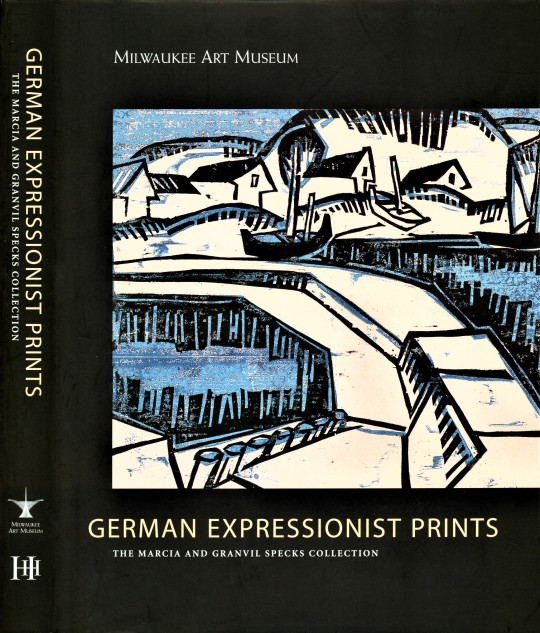
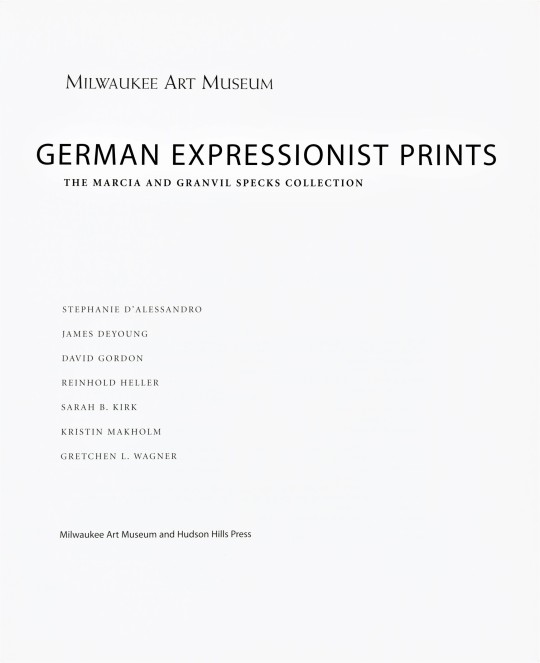

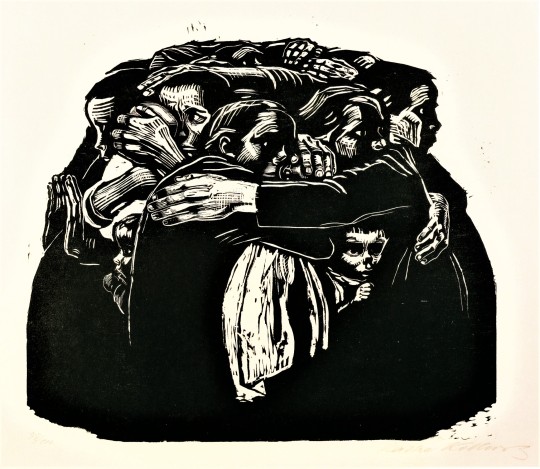
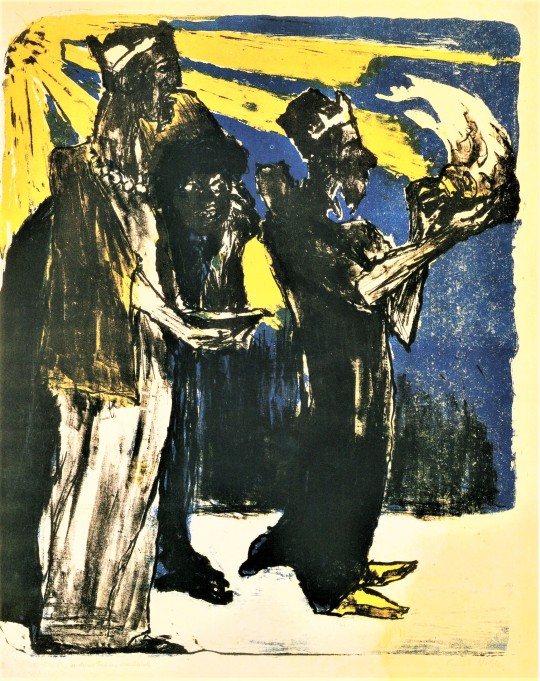

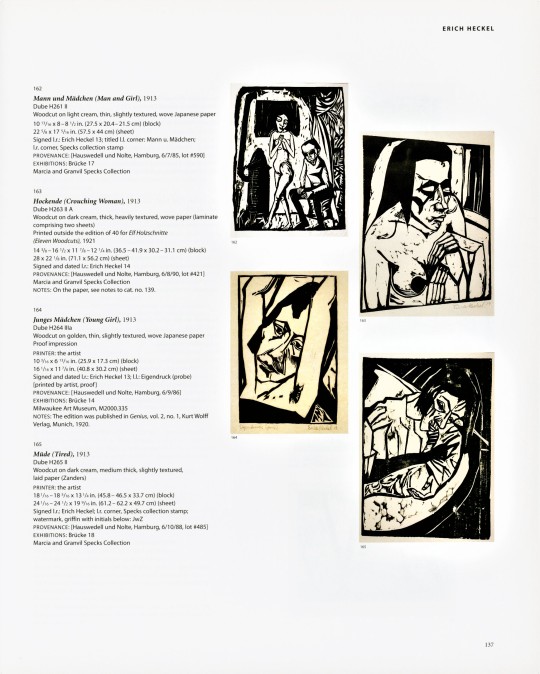



Staff Pick of the Week
This week I am sharing German Expressionist Prints: the Marcia and Granvil Specks Collection: Milwaukee Art Museum, published by Milwaukee Art Museum, Milwaukee, WI, and Hudson Hills Press, Inc., Manchester Vermont, 2003. This book was published to accompany a traveling exhibition of a selection of prints from the Specks Collection, which was on view at the Milwaukee Art Museum in 2004.
This collection, which lives at the Milwaukee Art Museum is one of the most significant collections of German Expressionist prints in the United States. This book features over 500 color reproductions of the works as well as essays, a catalogue of the prints, and artist bios.
For artists and art students like myself, catalogues such as this one are incredible resources for broadening our visual vocabulary and offering inspiration and broader understanding of our place in art history. The artworks in these kinds of books may be thousands of miles away, stored in back rooms of museums or in private collections. Many of the works in books such as this one are not even accessible online.
These books may be costly to acquire but many libraries, like UWM’s, have large collections of books like these that are free for you to check out and peruse.
Lucky for us the more than 450 prints in the Marcia and Granvil Specks Collection have their own gallery in the Milwaukee Art Museum where they are on continuous rotation. You and I are also able to see these works at the Herzfeld Photography, Print, and Drawing Study Center by appointment!
Use this link for more Staff Pick of the Week posts!
Teddy, Special Collections Graduate Intern
#staff pick of the week#milwaukee art museum#German Expressionist Prints#German Expressionism#Marcia and Granvil Specks Collection#Milwaukee#Printmaking#Art History#Art Museums#German Art#Art Collections#art books#hudson hills press#Art Exhibition#Woodcuts#teddy#etching#prints#lithographs
39 notes
·
View notes
Text

chestnut tree in the moonlight (kastanienbaum im mondlicht) by ernst ludwig kirchner, 1904, woodcut print
15 notes
·
View notes
Text







In her memoir printed in 1930 in Lektyr, the magazine published in Stockholm by her friend Lars Saxon, she described her technique in several sentences: "I live the part I am playing. I am completely under its spell, so that if anyone tries to speak to me or ask me questions, it wakes me up, so to speak." She followed the advice of both Delsarte and Stanislavski that actors should internalize a role until it becomes part of themselves. Mercedes thought that the characters Garbo played possessed her. The acclaimed directors Rouben Mamoulian and George Cukor agreed. Both said that her acting was intuitive; Mamoulian called it "a divine gift." (Mamoulian directed her in Queen Christina; Cukor in Ninotchka and Two-Faced Woman.)
But she prepared carefully for each role. She read books that provided context. Given her photographic memory, she memorized not only her own lines but also the lines of all the other actors. She practiced movements and gestures to find the ones she wanted to use. The producer Sam Marx saw her walking in the alley behind his office at MGM before filming began on Grand Hotel. She was pacing back and forth, varying her steps in speed and rhythm. Marx realized that she was figuring out how the ballerina she was playing in Grand Hotel should move.
In describing Garbo's acting, director Clarence Brown stressed the brilliance of her eyes. "She had something behind the eyes that you couldn't see until you photographed her in close-up. If she had to look at one person with jealousy, and another with love, she didn't have to change her expression. No other screen actress has been able to do that on film." The number of close-ups given to an actress in her films was considered a measure of her stardom; no other Hollywood actress in Garbo's era reached her total. Critics of Garbo’s acting charged that she was a somnambulist—that she sleepwalked through her films—which was characteristic of actresses in German expressionist films, which often were set in a dream landscape. (Ideal Beauty: The Life and Times of Greta Garbo)
#greta garbo#flesh and the devil#grand hotel#the mysterious lady#mata hari#queen christina#anna karenina#clarence brown#george cukor#rouben mamoulian#quotes#*
120 notes
·
View notes
Text
More Art-Related Vocabulary

Abstract Expressionist: An artistic movement of the mid-20th century emphasizing an artist’s freedom to express attitudes and emotions, usually through nonrealistic means.
Age of Exploration (also, Age of Discovery): From the early 15th century to the early 17th century, European ships traveled around the world in search of new trading routes, lands, and partners to supply an ever-growing European market.
Albumen silver print: A photograph made using a process that was prevalent until the 1890s. The paper is coated with albumen (egg whites), and the image is created using a solution of silver salts.
Brayer: A hand roller used for applying ink to relief printing blocks or occasionally for the direct application of paint or ink to a surface.
Caricature: A representation in either literature or visual art that includes a ridiculous distortion or exaggeration of body parts or physical characteristics to create a comic or gross imitation.
Ceramics: Vessels of clay made by using a variety of shaping techniques and then hardening or firing the clay with heat at a high temperature.
Chasing: A term encompassing two processes in metalworking: (a) modeling decorative patterns on a hand-shaped sheet-metal surface using punches applied to the front, and (b) finishing and refining a cast sculpture.
Classical: Describes a prime example of quality or “ideal” beauty. It often refers to the culture, art, literature, or ideals of the ancient Greek or Roman world, especially that of Greece in the 4th and 5th centuries B.C.
Collage: An art form and technique in which pre-existing materials or objects are arranged and attached as part of a two-dimensional surface.
Color palette: (a) A set of colors that makes up an image or animation, and (b) the group of colors available to be used to create an image.
Composition: The process of arranging artistic elements into specific relationships to create an art object.
Daguerreotype: An early method of photography produced on a silver plate or a silver-covered copper plate made sensitive to light.
Exoticism: Fascination with and exploration and representation of unfamiliar cultures and customs through the lens of a European way of thinking, especially in the 19th century.
Expressionism: A style of art inspired by an artist’s subjective feelings rather than objective or realistic depictions based on observation. Expressionism as a movement is mainly associated with early 20th century German artists interested in exploring the spiritual and emotional aspects of human existence.
Gelatin silver print: A photograph made through a chemical process in which a negative is printed on a surface coated with an emulsion of gelatin (an animal protein) containing light-sensitive silver salts.
Illuminated manuscript: Comes from the Latin words illuminare (to throw light upon, lighten, or brighten), manus (hand), and scriptus from the verb scribere (to write). A handwritten book, usually made from specially prepared animal skins, in which richly colored and sometimes gilded decorations, such as borders and illustrations, accompany the text.
Illuminator: A craftsman or artist who specializes in the art of painting and adorning manuscripts with decorations.
Impressionist: Referring to the style or theories of Impressionism, a theory or practice in painting in which objects are depicted by applying dabs or strokes of primary unmixed colors in order to evoke reflected light. Impressionism was developed by French painters in the late 19th century.
Inking plate: A flat surface used for rolling ink out in preparation for applying ink to a plate or block.
Inscription: A historical, religious, or other kind of record that is cut, impressed, painted, or written on stone, brick, metal, or other hard surface.
Source Art Vocabulary pt. 1
More: Word Lists
#art related#word list#photography#dark academia#writing reference#spilled ink#writeblr#literature#writers on tumblr#writing prompt#poetry#poets on tumblr#history#studyblr#creative writing#writing inspiration#writing inspo#writing ideas#art#konstantin somov#rainbow#nature#art vocab#writing resources
62 notes
·
View notes
Text

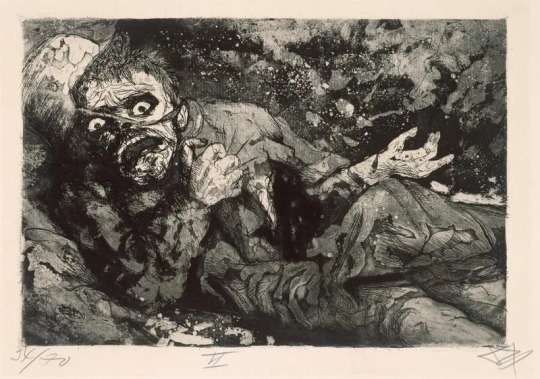
two prints from ‘the war’ series (1924) - otto dix
otto dix served in the war of 1914-18 as an artillery gunner in the trenches. the german expressionist recreated the images that he saw in his nightmares in this series of prints, titled ‘the war’. for dix, prints like this were an exorcism of the horrors he saw.
#art#art history#curators#culture#museums#history#war#expressionism#german expressionism#german art#world war one
674 notes
·
View notes
Text
The Future Is Noir
Scenography for the darkness with the uncertain future. Architecture of fear in the cinema of 1920s.
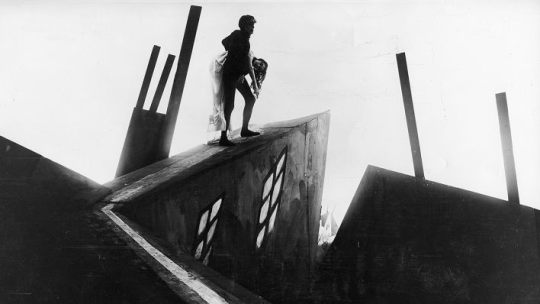
Considered the quintessential work of German expressionist cinema, the Cabinet of Dr. Caligari (1920) by Robert Wiene tells the story of an insane hypnotist who uses a brainwashed somnambulist to commit murders.
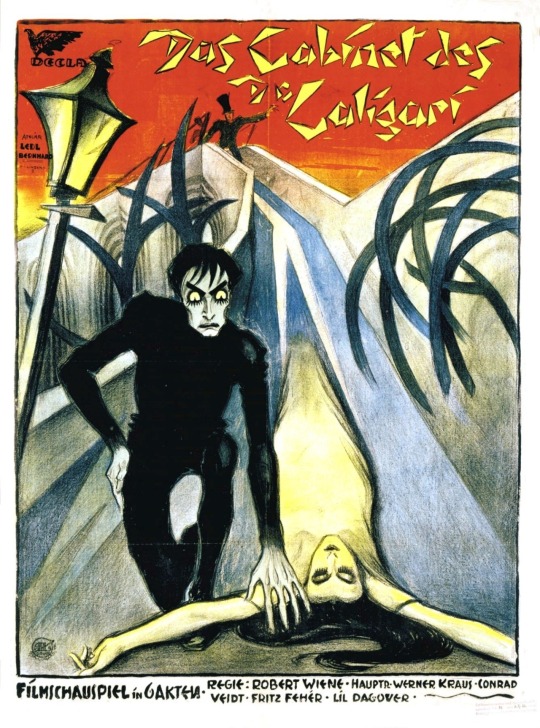
youtube
The film thematizes brutal and irrational authority. Caligari can be representing the German war government, with the symbolic of the common man conditioned to kill. The film include the destabilized contrast between the subjective perception of reality, and the duality of human nature.

An unofficial adaptation of Bram Stoker's 1897 novel Dracula in film is the German version of Nosferatu: A Symphony of Horror (1922) by F. W. Murnau. Nosferatu is an archaic Romanian word Nesuferitu` meaning the offensive or the insufferable one. The movie is actually about the First World War and the plague is a metaphor for the mass death and destruction of the war.

youtube
Nosferatu was banned in Sweden due to excessive horror until 1972. All known prints and negatives were destroyed under the terms of settlement of a lawsuit by Bram Stoker's widow.

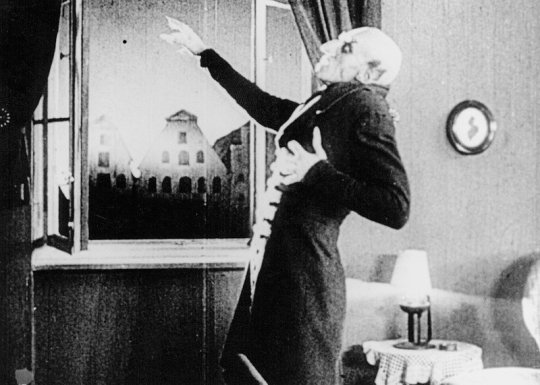
Berlin – Die Sinfonie der Großstadt (1927) is an experimental documentary by Walther Ruttmann. It begins with a drive of a high-speed train pulled by a steam locomotive through meadows, arbor and residential areas into the city and thus delimits the surrounding area from the big city.

The train arrives at Anhalter Bahnhof near the city center, where streets empty in the morning are filling up with people on their way to work. The rhythm of the city is getting faster and faster. With the 12 o'clock bell strike, the speed collapses. After lunch break and food intake, however, it begins to accelerate again in the afternoon.
youtube
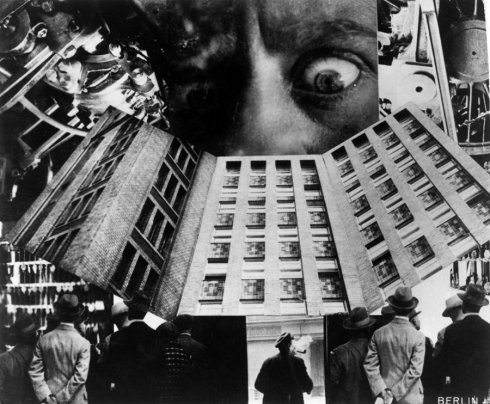
Cabiria (1914), an Italian epic silent film by Giovanni Pastrone, was shot in Turin. The film is set in ancient Sicily, Carthage, and Cirta during the period of the Second Punic War (218–202 BC).

It follows a melodramatic main plot about an abducted little girl, Cabiria, and features an eruption of Mount Etna, heinous religious rituals in Carthage, the alpine trek of Hannibal, Archimedes' defeat of the Roman fleet at the Siege of Syracuse and Scipio maneuvering in North Africa.
youtube

One the most influential films in cinema history, Dziga Vertov's exhilarating ode to Bolshevik Russia the Man with a Movie Camera (1929). It is a visual argument for the place of the documentary filmmaker as a worker, educator, and eyewitness in a proletariat society. The film is an impressionistic view of urban daily life, seen from a purely cinematic perspective.

youtube

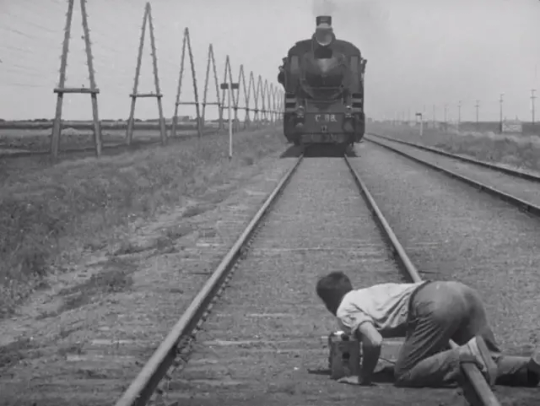
77 notes
·
View notes
Text

Albert Renger-Patzsch (German 1879-1966) ~
Mary Wigman in Klage aus dem Tanzzyklus Opfer, 1931.
Mary Wigman (1886-1973) was a German dancer and choreographer, known as the pioneer of expressionist dance, dance therapy and barefoot movement training.
She is considered one of the most important figures in the history of modern dance.
Gelatin silver print, printed ca. 1931.
#art#beauty#photography#vintage#black and white#60s style#the paradigm web#painting#abstraction#nude figure
21 notes
·
View notes
Note
Hiii! This question is kinda apropos of nothing but I’m curious: who is the person in your profile pic? Every time I scroll past it a little too fast I think it’s Alan Alda/Hawkeye haha
no worries (i think alan alda would be honoured, if i remember correctly, he mentioned meeting him once as a kid in his memoir). it's this fellow:


his name was conrad veidt, a famous german actor of the weimar republic, later escaped to britain and then the us to get away from the nazis with his jewish wife, Ilona Prager. he also starred in two pro-jewish films shortly after the nazis came to power in 1933 (the wandering jew, and jew süss, but i confess i haven't watched these yet, so i cannot say how well they aged) -- generally did a few films that were about Social Issues that came down on the side of the oppressed, including the woman's crusade, and the merry-go-round, as well as... (see below)
famous for some very important movies: 1. played the lead in the first movie to openly portray gay men (anders als die andern), which was produced by magnus hirschfeld and the institute of sexology in a bid to get support for legalising homosexuality -- it's free on youtube! also 105 years old, can you believe... 2. played the somnambulist in the cabinet of dr caligari, and generally was every vamp-girls/boys dream back in the day, playing in a lot of the german expressionist films and proto-horror films, and generally not afraid to play offbeat, uncomfortable roles that weren't about being an attractive leading man (eerie tales, the hands of orlac, waxworks, the man who laughs) 3. after he moved to the us, he was very happy to portray nazis to give them realism, and he plays major heinrich strasser in casablanca in 1942 (his second-last film)
i believe he was in a total of 115 films, but quite a few of them between when he started in 1917 and 1930 are lost (der januskopf, i think of you often....murnau, bela lugosi, and conrad veidt, in an adaptation of jekyll and hyde??? arghhh)
other fun facts, did occasionally crossdress and in fact this may have contributed a little to his first divorce, as his wife found him and a bunch of his friends wearing dresses one night after she came back from work -- notably conrad was in her new dress. she told a friend that this was the breaking point, but it may have partially been a joke. they did divorce though
was also at one point called the prettiest girl in berlin in print, good for him
was probably bisexual, although having said that i've actually never read why people think this -- so for now, he was a mensch and a great ally to a lot of people, a little on the queerer side in all things
i do follow a fair few conrad veidt blogs on here, but i don't talk about him often, it's one of those "am a fan, but keeping it mostly to the chest" kind of things with him -- however, as you can tell, very happy to give the Info when asked!
that's the man, the girl, the pretty boy: mr conrad veidt!
#conrad veidt#really i ought to get a book on him to fill in the gaps in my knowledge#a lot of the time im happy to just chill with what i know and different articles but.. i like a good book#weimar republic#weimar berlin#anders als die andern#queer history#queer cinema#cabinet of dr caligari#casablanca
29 notes
·
View notes
Text
queerness & horror pt. 2


nosferatu (1922) represents the beginnings of the horror film genre, fundamentally shifting its landscape. created by the openly gay filmmaker f.w. murnau, it features the ultimate queer-coded monster. nosferatu not only birthed the german expressionist movement—one of the most influential in film history—but also revolutionized the cinematic depiction of vampires. the film's simultaneous blend of seduction and horror paved the way for future queer horror filmmaking, influencing classics like dracula, frankenstein, the bride of frankenstein, dracula's daughter, and the wolf man, which followed years later.
bram stoker, the author known for his gothic horror novel dracula, created the first queer-coded monster in the vampire. unlike stoker's count dracula, i personally find nosferatu’s portrayal of the vampire to be superior. count orlok's strange, hideous, and creepy demeanor adds a unique depth to the character. it’s possible that murnau infused the film with queer undertones, seeing aspects of himself in orlok. the film even includes a bedroom seduction scene between the vampire and a man, which emphasizes these themes.
(the universal monsters represent a fascinating realm of cinema and i’d love to delve deeper into dracula as a queer icon, but i will save that for its own post heheh)
count orlok embodies the fear of 'the other,' driving the film's narrative with its queer and monstrous tones. stoker’s widow, florence stoker, recognized the similarities and subsequently sued f.w. murnau, resulting in nosferatu being deemed an illegal adaptation. florence won the lawsuit, and the court ordered all prints of the film to be destroyed. however, a singular print was secretly preserved, allowing us to experience nosferatu as we know it today. isn’t that insane? can you imagine all the queer horror media that’s been destroyed throughout history and never to be recovered?

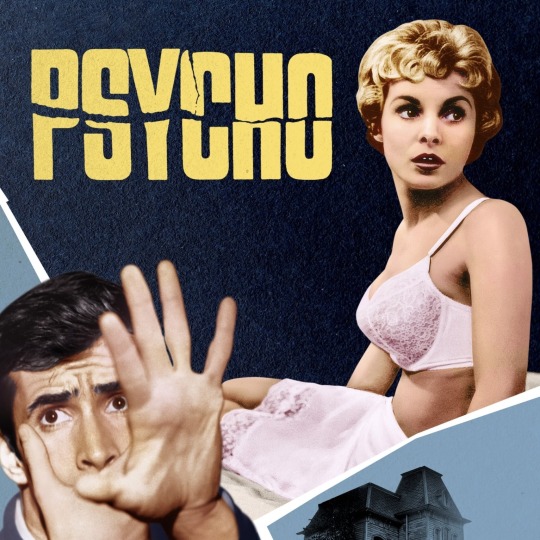
alfred hitchcock is another prominent name in hollywood. while he was known to be a heterosexual man, he was inspired by and fascinated with homosexuality and queerness. he surrounded himself with queer family and friends, becoming a true ally who supported and understood the queer experience, which is evident in his filmmaking. many of his films explore queer themes, but i’d like to focus on psycho (1960), mainly because it’s the only hitchcock movie i’ve watched so far and one of my favorites.
the main character, norman bates, played by anthony perkins who is often speculated to have been gay or bisexual, adds an intriguing layer to the film. like the director of nosferatu, hitchcock recognized the fear of living as a queer person. there’s something relatable and comforting about that perspective; i feel represented in a way. as i mentioned in my previous post, horror filmmakers understood the advantages of exploring taboo themes. as a result, queerness and horror often intersect, both being perceived as bad, wrong, explicit, and unholy. ultimately, this convergence creates a cohesive theme that feels profoundly right.
#mine#horror#writing#journal#goth#punk#aesthetic#vintage#classic#vampire aesthetic#nosferatu#count orlok#dracula#Spotify
7 notes
·
View notes
Text

Ernst Ludwig Kirchner
Rothaarige Frau - Mie und Gothein
1915
#ernst ludwig kirchner#expressionist#expressionist painting#expressionist art#expressionist painter#expressionist artist#expressionism#german artist#german art#german painter#die brücke#aesthetic#beauty#print#expressionistic#aesthetic beauty#modern art#art history#aesthetictumblr#tumblraesthetic#tumblrpic#tumblrpictures#tumblr art#tumblrstyle#artists on tumblr
4 notes
·
View notes
Text
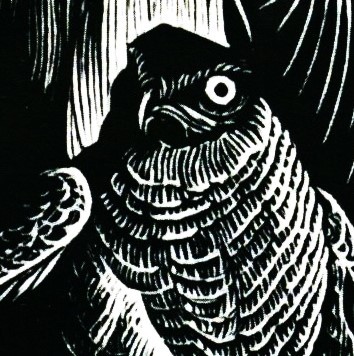


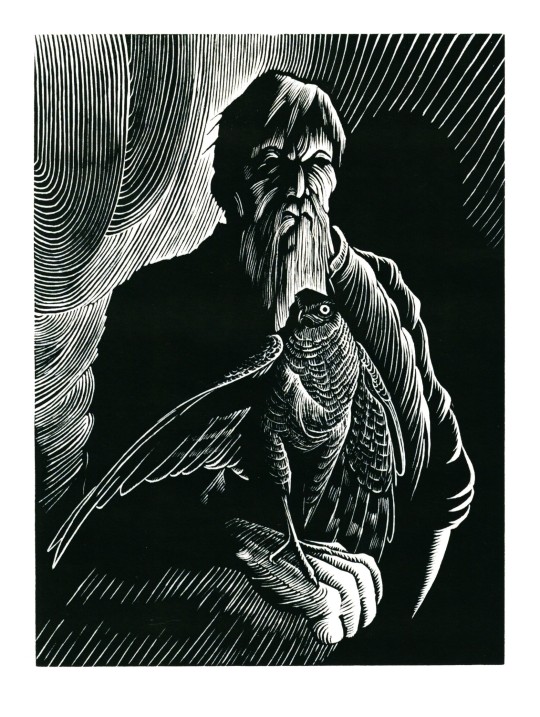
Another Wood-engraved Feathursday
JOHN MCWILLIAMS
Now here's a couple of intense fellows! The print is entitled Sparrow Hawk by South Carolina artist and engraver John McWilliams (b. 1941). The print was selected for inclusion in the Fourth Triennial Exhibition 2020-2022 of the American wood engravers society, the Wood Engravers’ Network (WEN), and this image is from the catalog for that traveling show.
McWilliams's work is inspired by Lowlands flora and fauna, so it seems a little odd that he would choose as his subject the Eurasian Sparrow Hawk (Accipiter nisus) rather than the American Kestrel (Falco sparverius), which is so common to his native habitat. Both species are used in falconry. Nevertheless, both offer something for the engraver, and we enjoy how McWilliams's Sparrow Hawk looks like it's about to take a bow.
John McWilliams received his BFA and MFA from the Rhode Island School of Design and is Professor/Director Emeritus of Georgia State University Ernest G. Welch School of Art and Design. He has received numerous awards, including the Guggenheim Foundation Fellowship and the National Endowment for the Arts Fellowship in photography. Today he maintains a studio in McClellanville, S.C. He counts as his inspirations the work of Albrecht Dürer and the German expressionists, the illustrations of Rockwell Kent, and the graphic novels of Lynd Ward and Frans Masereel. Of working in wood, he writes:
Woodcuts and wood engravings . . . have held much fascination for me. . . . The process of developing an image into a woodcut or wood engraving gives structure to my life. . . . It is such sweet irony that, although the act of creating gives my life structure, it nevertheless produces an enigma, a puzzle that others may interpret through their own lives. There are no easy answers. Such is life.
View more Feathursday posts.
View other posts with engravings from the WEN Fourth Triennial Exhibition.
View more engravings by members of the Wood Engraver’s Network.
View more posts with wood engravings!
#Feathursday#wood engravings#wood engravers#John McWilliams#Eurasian Sparrow Hawk#George Dirolf#Wood Engravers' Network#WEN#WEN Fourth Triennial Exhibition#exhibitions#exhibition catalogs#birds#birbs!
50 notes
·
View notes
Text
New! SPECIAL FEATURES Eddie Redmayne First Played the Cabaret's Emcee in School, Now He's Doing It on Broadway.
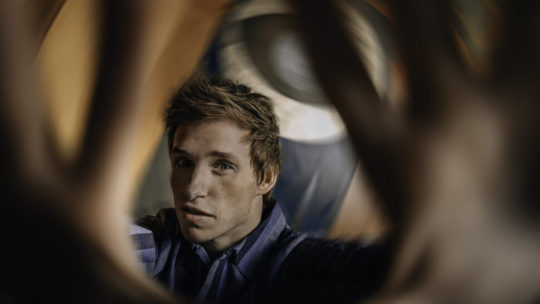
The actor is newly Tony nominated for his nihilistic take on the iconic character.
By TALAURA HARMS , Playbill, May 10th, 2024
📷 Heather Gershonowitz.
Eddie Redmayne is gathering tips. As the Tony and Oscar-winning actor was opening a Broadway musical this season, he was also trying to figure out the best ways to navigate New York City for the six months that he’ll be in the show. His wife and two young children have joined him from London. They’re currently looking for ways to spend summer in the city. And speaking of summer, Redmayne is concerned about keeping his voice in good working order in a city with more air conditioning than he’s accustomed to having.
“I’m accumulating a little handbook of ‘The Survivor’s Guide to Broadway,” Redmayne laughs. “I’m a passionate lover of New York, so any excuse to come here…I’m thrilled.”
The excuse—and it’s a pretty good one—is Cabaret at the Kit Kat Club, which opened April 21 at the August Wilson Theatre. Redmayne reprises his role as The Emcee in the revival of the classic John Kander, Fred Ebb, and Joe Masteroff musical. Rebecca Fracknell directs the production, a West End transfer that won seven 2022 Olivier Awards, including one for Redmayne’s performance. The production has been a hit in the London, where it is currently still running.
Redmayne is the only member of the West End cast, though, to transfer to Broadway with the production. He’s joined at the August Wilson by Gayle Rankin as Sally Bowles, Ato Blankson-Wood as Clifford Bradshaw, Bebe Neuwirth as Fraulein Schneider, and Steven Skybell as Herr Schultz. And both Rankin and Redmayne have been Tony nominated for their performances; the show picked up nine nominations total, including Best Revival of a Musical.
“It’s been such a unique experience because it’s been starting anew and fresh whilst at the same time, having this character sitting in my stomach and ruminating for three years now. And my journey, of the relationship with the character, has been one that stems from, oh gosh, almost 30 years now from when I first played it when I was a schoolboy,” says Redmayne. “There is great joy that comes from that—from each time getting to re-mine the character and re-look at it in a different context and with a different inspiration.”
When Playbill spoke with Redmayne, the company was still in rehearsals for the Broadway mounting. As part of his continuing exploration of the Emcee, the actor had just revisited one of his favorite New York museums, the Neue Galerie of German and Austrian art on Manhattan’s Upper East Side.
“I was looking at some of the Schiele paintings there and reminding myself of how, when I first started looking into the idea of The Emcee, just having portfolios of Schiele prints everywhere. That was one of the ways in. It was a lovely moment to reconnect and reinspire in the museum.” It is easy to spot the influence of the Austrian Expressionist painter Egon Schiele in the angles of Redmayne’s body as he looks over a shoulder, crooks an arm, or snarls a bit, daring an audience to come a little closer.
The original source material for Cabaret is the 1939 Christopher Isherwood novel Goodbye to Berlin. It was inspired by his own life during the Weimar Republic when the freedom of the Jazz Age was clashing with the rise of Nazism and fascism. The Emcee, though, is not a character in the novel, nor in the play adaption I Am a Camera. He was created solely for Cabaret and does not exist in any of the scenes outside of the Kit Kat Club. The lack of story for The Emcee has allowed Redmayne to create a character almost entirely from scratch.
“He exists almost in abstraction for me. The character is almost like a Greek chorus. He’s sort of the Shakespearean fool. The court jester who then becomes the king,” says Redmayne. “He can assimilate and accumulate people from every walk of life and community, and can seemingly either celebrate or exploit that. As the world is becoming more homogenized and fascism is kicking in, he can shape-shift his way out of it, and he’s going to be just fine. He has the privilege of that. There’s a nihilism, ultimately, to my take on The Emcee that felt important. He’s not the victim. He's the perpetrator".
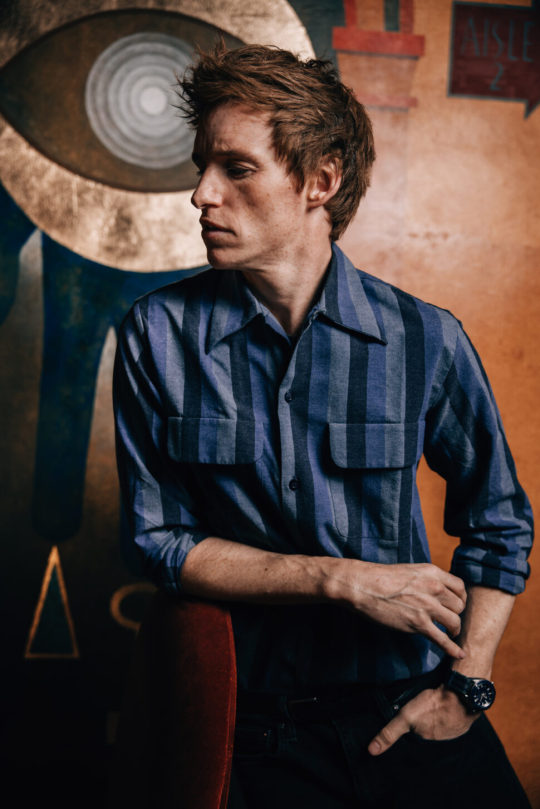
Cabaret first premiered on Broadway in 1966 and this production is the musical’s fourth revival. Except for the 1970s (when it was adapted for film starring Liza Minnelli), it has been on Broadway at some point in every decade since that first run. “There’s always been this relevance culturally, and that’s terrifying, because it basically sings as a warning to our incapacity to learn from our mistakes,” says Redmayne. “It’s about what happens when humanity is consumed by hate. And the idea of the creation of the other and the exploitation of the other to instill fear.”
Arguably, the musical’s draw has always also been as much about how it presents that message as the relevance of the message itself. The Kit Kat Club is seedy and seductive. It feels naughty…like you’re getting away with something you shouldn’t. And this new production pushes that element far beyond the footlights of a stage. Club, scenic, and costume designer Tom Scutt has reformed the August Wilson Theatre, creating spaces in the house and in the bar for a Prologue company to perform. Audiences are encouraged to arrive early to take in the music and dance cabaret acts prior to Cabaret.
Redmayne is reminded again of his museum visit: “When I was at the Neue Galerie, there was an exhibition on [Gustav] Klimt. This idea that this group of artists in Austria at the time, and then in Germany, were trying to create this world which was all-consuming. It wasn’t just the painting, it was also the specific space in the gallery…you were not just looking at the painting but the entire experience around it. I feel like that is, perhaps, the dream of what we’re trying to do. Once you leave the sidewalk and cross the threshold [into the theatre], you’re being taken on a journey that’s all encompassing.”
Boris Aronson’s original set design for the 1966 production of Cabaret featured a large mirror above the stage, tilted toward the audience so that they could see themselves reflected at both the beginning and end of the musical. Scutt has created a fully in-the-round stage at the Wilson.
So while the audience is watching the action on stage, they will also be seeing other audience members’ reaction to the story. “There’s complicity in that,” says Redmayne. “We’re all there laughing and engaging in an evening of entertainment, but also seeing ourselves in some of the elements—the joyful qualities of humanity and the scarier qualities, too.”
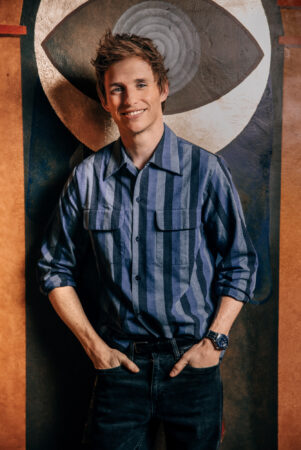

10 notes
·
View notes
Text
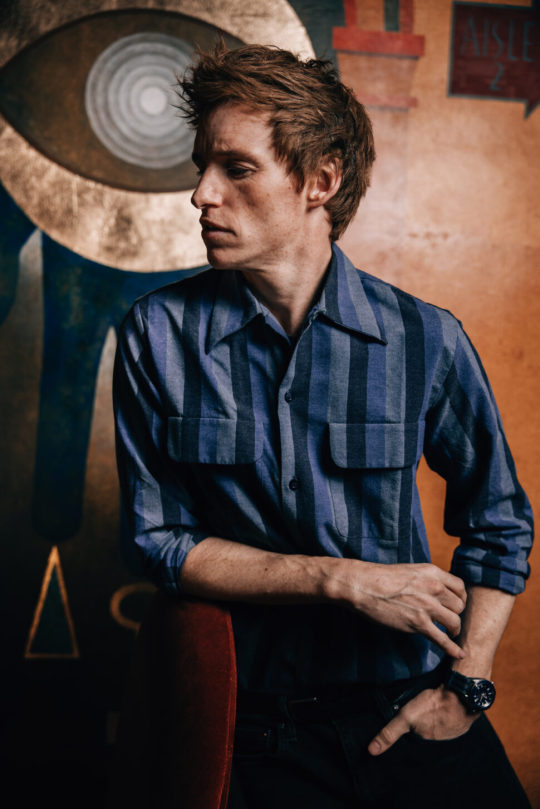
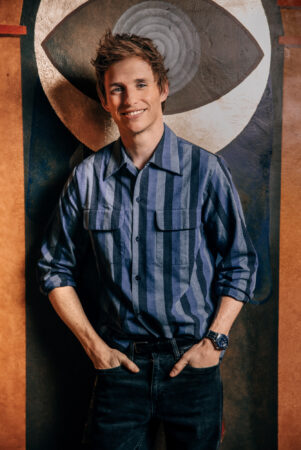

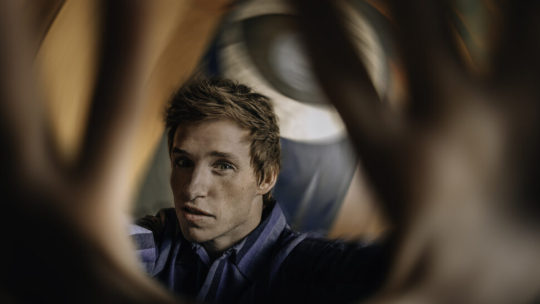
SPECIAL FEATURESEddie Redmayne First Played the Cabaret's Emcee in School, Now He's Doing It on Broadway
The actor is newly Tony nominated for his nihilistic take on the iconic character.
BY TALAURA HARMS MAY 10, 2024
Eddie Redmayne is gathering tips. As the Tony and Oscar-winning actor was opening a Broadway musical this season, he was also trying to figure out the best ways to navigate New York City for the six months that he’ll be in the show. His wife and two young children have joined him from London. They’re currently looking for ways to spend summer in the city. And speaking of summer, Redmayne is concerned about keeping his voice in good working order in a city with more air conditioning than he’s accustomed to having.
“I’m accumulating a little handbook of ‘The Survivor’s Guide to Broadway,” Redmayne laughs. “I’m a passionate lover of New York, so any excuse to come here…I’m thrilled.”
The excuse—and it’s a pretty good one—is Cabaret at the Kit Kat Club, which opened April 21 at the August Wilson Theatre. Redmayne reprises his role as The Emcee in the revival of the classic John Kander, Fred Ebb, and Joe Masteroff musical. Rebecca Fracknell directs the production, a West End transfer that won seven 2022 Olivier Awards, including one for Redmayne’s performance. The production has been a hit in the London, where it is currently still running.
Redmayne is the only member of the West End cast, though, to transfer to Broadway with the production. He’s joined at the August Wilson by Gayle Rankin as Sally Bowles, Ato Blankson-Wood as Clifford Bradshaw, Bebe Neuwirth as Fraulein Schneider, and Steven Skybell as Herr Schultz. And both Rankin and Redmayne have been Tony nominated for their performances; the show picked up nine nominations total, including Best Revival of a Musical.
“It’s been such a unique experience because it’s been starting anew and fresh whilst at the same time, having this character sitting in my stomach and ruminating for three years now. And my journey, of the relationship with the character, has been one that stems from, oh gosh, almost 30 years now from when I first played it when I was a schoolboy,” says Redmayne. “There is great joy that comes from that—from each time getting to re-mine the character and re-look at it in a different context and with a different inspiration.”
When Playbill spoke with Redmayne, the company was still in rehearsals for the Broadway mounting. As part of his continuing exploration of the Emcee, the actor had just revisited one of his favorite New York museums, the Neue Galerie of German and Austrian art on Manhattan’s Upper East Side.
“I was looking at some of the Schiele paintings there and reminding myself of how, when I first started looking into the idea of The Emcee, just having portfolios of Schiele prints everywhere. That was one of the ways in. It was a lovely moment to reconnect and reinspire in the museum.” It is easy to spot the influence of the Austrian Expressionist painter Egon Schiele in the angles of Redmayne’s body as he looks over a shoulder, crooks an arm, or snarls a bit, daring an audience to come a little closer.
The original source material for Cabaret is the 1939 Christopher Isherwood novel Goodbye to Berlin. It was inspired by his own life during the Weimar Republic when the freedom of the Jazz Age was clashing with the rise of Nazism and fascism. The Emcee, though, is not a character in the novel, nor in the play adaption I Am a Camera. He was created solely for Cabaret and does not exist in any of the scenes outside of the Kit Kat Club. The lack of story for The Emcee has allowed Redmayne to create a character almost entirely from scratch.
“He exists almost in abstraction for me. The character is almost like a Greek chorus. He’s sort of the Shakespearean fool. The court jester who then becomes the king,” says Redmayne. “He can assimilate and accumulate people from every walk of life and community, and can seemingly either celebrate or exploit that. As the world is becoming more homogenized and fascism is kicking in, he can shape-shift his way out of it, and he’s going to be just fine. He has the privilege of that. There’s a nihilism, ultimately, to my take on The Emcee that felt important. He’s not the victim. He's the perpetrator.”
Cabaret first premiered on Broadway in 1966 and this production is the musical’s fourth revival. Except for the 1970s (when it was adapted for film starring Liza Minnelli), it has been on Broadway at some point in every decade since that first run. “There’s always been this relevance culturally, and that’s terrifying, because it basically sings as a warning to our incapacity to learn from our mistakes,” says Redmayne. “It’s about what happens when humanity is consumed by hate. And the idea of the creation of the other and the exploitation of the other to instill fear.”
Arguably, the musical’s draw has always also been as much about how it presents that message as the relevance of the message itself. The Kit Kat Club is seedy and seductive. It feels naughty…like you’re getting away with something you shouldn’t. And this new production pushes that element far beyond the footlights of a stage. Club, scenic, and costume designer Tom Scutt has reformed the August Wilson Theatre, creating spaces in the house and in the bar for a Prologue company to perform. Audiences are encouraged to arrive early to take in the music and dance cabaret acts prior to Cabaret.
Redmayne is reminded again of his museum visit: “When I was at the Neue Galerie, there was an exhibition on [Gustav] Klimt. This idea that this group of artists in Austria at the time, and then in Germany, were trying to create this world which was all-consuming. It wasn’t just the painting, it was also the specific space in the gallery…you were not just looking at the painting but the entire experience around it. I feel like that is, perhaps, the dream of what we’re trying to do. Once you leave the sidewalk and cross the threshold [into the theatre], you’re being taken on a journey that’s all encompassing.”
Boris Aronson’s original set design for the 1966 production of Cabaret featured a large mirror above the stage, tilted toward the audience so that they could see themselves reflected at both the beginning and end of the musical. Scutt has created a fully in-the-round stage at the Wilson.
So while the audience is watching the action on stage, they will also be seeing other audience members’ reaction to the story. “There’s complicity in that,” says Redmayne. “We’re all there laughing and engaging in an evening of entertainment, but also seeing ourselves in some of the elements—the joyful qualities of humanity and the scarier qualities, too.”
Photographer : Heather Gershonowitz
https://playbill.com/article/eddie-redmayne-first-played-the-cabarets-emcee-in-school-now-hes-doing-it-on-broadw
#eddie redmayne#play bill#article#new photos#cabaret nyc#cabaret kit kat club#cabaret at kit kat club#the emcee#broadway#august wilson theater#eddieredmayneedit#new article#Heather Gershonowitz#photographer#*#hp
11 notes
·
View notes
Text
by Ben Cohen
One of Canada’s leading French-language news outlets abruptly removed a crudely antisemitic caricature of Israeli Prime Minister Benjamin Netanyahu from its website on Wednesday morning following a storm of protest from Canadian politicians and Jewish advocates.
The image, drawn by veteran cartoonist Serge Chapleau — who has won several awards for his work and was honored with the Order of Canada medal in 2015 — was published by the Montreal-based newspaper La Presse and appeared on the front page of its print edition. It showed Netanyahu as Nosferatu, the titular character of a classic 1922 German Expressionist silent movie about a blood-sucking vampire, Count Orlok, who preys upon a real estate agent and his wife under the cover of purchasing a house and who, later in the film, unleashes a plague of rats onboard a ship on which he is traveling. The film is based on the famous 1897 novel Dracula, set in Romania.
Chapleau’s cartoon imposed Netanyahu’s features on that of a vampire wearing a grim, lifeless expression, with his hands replaced by long claws. An accompanying text displayed the word “Nosfenyahou” — a contraction of “Nosferatu” and the Francophone spelling of Netanyahu’s last name — dripping with blood. Another text beneath declared “On the way to Rafah,” the city in Gaza where Israeli troops have been battling Hamas terrorists.
Historically, antisemitic caricatures of Jews frequently depicted them as blood-suckers, building on earlier Christian libels that falsely accused Jews of using the blood of Christians in their religious rituals. Since the Oct. 7 Hamas pogrom in Israel, the same motif has appeared across the Arab world in relation to Israel’s war against Hamas in Gaza, with news outlets in Morocco, Jordan, and Qatar all publishing cartoons of Netanyahu drinking the blood and consuming the flesh of Israel’s adversaries.
By the middle of Wednesday morning, La Presse had removed its contribution to the genre following widespread protests on social media. However, the paper has not apologized for the offending image nor offered an explanation as to why it was published to the 860,000 followers of its feed on X/Twitter.
“No big deal, just the second-largest newspaper in French Canada caricaturing Jews as vampires,” David Frum — a Canadian-American writer and former speechwriter for US President George W. Bush — remarked in a post. Frum added: “That’s how antisemitism often works. A rich inventory of anti-Jewish images and themes pre-exists: the Jew as bloodsucker, the Jew as child-killer, the Jew as alien enemy. When a user wants to vent rage or dislike … the resource accumulated over centuries is waiting for him.”
Canadian politicians who condemned the cartoon included Quebec Senator Leo Housakos, who said he had been “appalled” by it.
“While Mr. Netanyahu, as with any politician, is not above criticism, this kind of antisemitic trope is reminiscent of the 1930s. I’m saddened for Jews across Canada for the level of hate to which we, as Canadians, have co-signed,” Housakos’ X/Twitter post continued.
17 notes
·
View notes